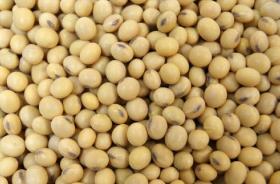- europages
- >
- COMPANIES - SUPPLIERS - SERVICE PROVIDERS
- >
- press cakes
Results for
Press cakes - Import export

DE SMET ENGINEERS & CONTRACTORS
Belgium
De Smet Engineers & Contractors has been involved in all steps of the production of vegetable oils from oilseeds crushing for the construction of Edible Oils Plants; in this article you will find a more detailed understanding about the process of vegetable oil extraction: First step: Preparation of the oil containing material prior to solvent extraction Cleaning and Drying The plant feedstock must be cleaned so that foreign matters are removed. This applies particularly to sand/silicate and iron which may damage the preparation plant equipment. For some seeds or for some processes the incoming material moisture must be controlled and adjusted for better efficiency of subsequent operations. Mechanical preparation Most of raw materials needs to broken to reduce the particle size to ensure proper cooking and flaking. They are then heated in cooking / conditioning equipment and their moisture further controlled in addition to be softened before the next mechanical operations. After cooking, heated grits are flaked so that the oil cells are broken and the oil more readily available for further solvent extraction or mechanical pressing. Pressing Oilseeds containing above 20 to 25% (rapeseed, sunflower seeds, cottonseeds...) are generally pressed mechanically in order to extract most or part of the oil available in the feedstock. This operation is done through full pressing for maximum oil recovery leaving up to 5 to 10% in the final cake which is marketed as such or through a low pressure pre-pressing operation producing a cake with higher residual oil content which is then recovered in the solvent extraction plant. Dehulling Oil extraction plants produce a solid finished product in addition to the extracted oil; this product (cake or meal) is normally used as an important component for animal feed recipes. Depending on the meal destination, its protein content often needs to be increased and its fibre content minimized. Such characteristics are generally achieved through decortication or dehulling operations that separate the outer part of the feedstock before extracting the oil. Second step: Solvent extraction of the material suitably prepared Extraction In the solvent extractor, solids (Flakes from the flaking machines or cakes from the pre-presses) are conveyed through the equipment while a mixture of hexane and oil (miscella) is sprayed counter-current. The extractor produces therefore deoiled solids containing solvent and miscella. Desolventization Deoiled solids coming out of the extractor are conveyed to a dedicated equipment that completely removes the remaining solvent while preserving the meal quality: the desolventizer. This apparatus is usually combined with additional sections for drying and cooling the meal to the required storage and market parameters. Miscella distillation Solvent contained in the miscella is completely removed under vacuum and optimum temperature for preserving oil quality. The solvent from the distillation as well as the one removed at meal desolventization stage are then recycled to the extractor. Solvent recovery Since the air entering the process together with material fed to the extractor is laden with solvent when it is removed from the plant it first pass through a specially designed absorption column to limit emission to an acceptable level. Meal treatment The extracted meal is often subject for further treatment, including grinding to obtain the required granulometry or pelletizing to reduce its volume during transport.
Request for a quote
IMPULSE COMMODITY TRADING OÜ
Estonia
Soy is the most common plant of the legume family, which is grown in more than 60 countries around the world. The main biochemical component of culture is protein. Its feature is that it is well absorbed by the body of humans and mammals and is an alternative to products of animal origin. In addition, soy is rich in amino acids, especially lysine, the content of which is quite low in other plants. Soy has become the most popular in vegetarian cuisine. Here it is used as a complete substitute for meat and milk. Soybean grist and press cake, which is obtained during the production of oil, are used in animal husbandry. Impulse Commodity Trading works directly with the best suppliers and offers its customers the highest quality soybeans. To find out the details, contact us on the phone indicated on the website.
Request for a quote
W. ULRICH GMBH
Germany
also known as argan seed oil, is the oil of the argan tree. The tree or bush belongs to the sapodilla family and grows exclusively in Morocco. it grows 7 - 10 meters high and reaches an average age of 125 - 150 years. As of the 5th year it bears fruits. 1990 the growing region in Morocco is listed by UNESO as a to be protected biosphere . The fruits are round to oval and have a green, fleshy appearance, like olives. The fruits contain 1 - 3 oval, smooth, brown, up to 2 cm long kernels with its seeds inside. For oil extraction the fallen fruits get selected. This takes place from june to september. There is no other way to harvest, as the branches of the tree are easily broken if shook. The thornes make picking the fruits by hand impossible. The harvested fruits' kernels have to be removed and split to get to its seeds. The locals grind the seeds to a brown pulp and stir it with water. By kneading the oil gets seperated from the water. The resulting press cake is used as animal feed.
Request for a quoteDo you sell or make similar products?
Sign up to europages and have your products listed
Results for
Press cakes - Import exportNumber of results
3 ProductsCountries
Company type
Category